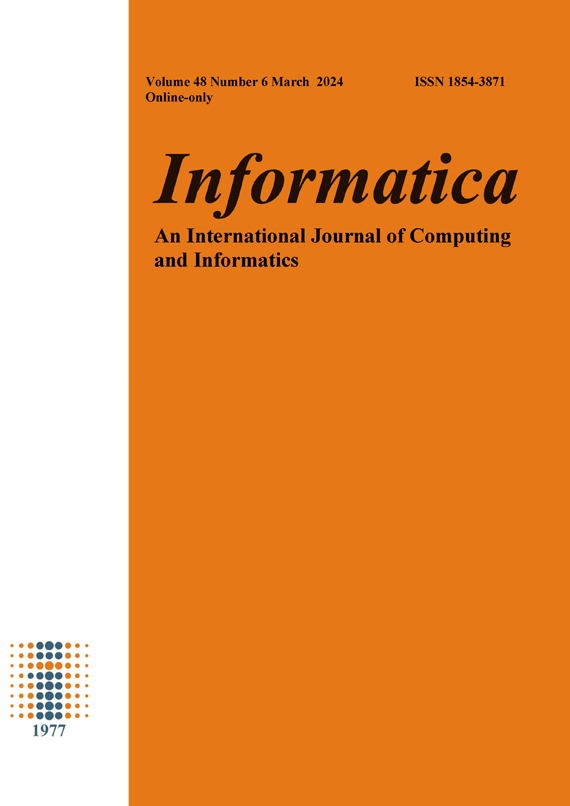Analysis of Immersive Virtual Reality Tourism Resources Based on Navier-Stokes Equations
DOI:
https://doi.org/10.31449/inf.v48i6.5514Abstract
The development of virtual reality tourism resources is mainly to achieve the sharing between tourists and scenic spots, attractions, and transportation as well as information, rather than just staying in the physical space. There are many virtual reality tourism resources in real life. These are natural resources with special characteristics. Natural geographies, such as geological landscapes, and visual elements such as colorful and varied textures and colors can be attractive and are an essential element in the construction of virtual landscapes, attractions, and transport routes. Virtual reality is an emerging field of computer-based, multimedia-based simulation and modeling of physical phenomena in natural and social life, which has a wide range of applications in immersive virtual reality tourism. This paper introduces a 3D physical virtual reality tourism resource analysis system designed based on the Navier-Statics equation software development environment and hardware support.
References
Tang QH, Tang X et al. An optimal voyage planning method based on a dynamic access network model. Journal of Wuhan University Information Science Edition, 2015.40(9):521-527.
Long Q, Ye C et al. Distributed path generation algorithm based on real-time road condition information in dynamic road networks. Computer Science, 2014.41(9):259-278.
Yu Yao, Yang Zhaosheng, Mo Xianglun, et al. A continuous path induction method based on urban interest points. Journal of Jilin University, 2014.44(3):631-636.
Leng Xuntai. Anytime Algorithm for Point-to-Point Shortest Path Computation on Large-Scale Road Networks. University of Science and Technology of China, 2014.
Yang Hao-Xiong, Wang Dan, Zhang Jing-Li. Research on the shortest path of congested traffic based on the ant colony algorithm. Computer Simulation, 2015.32(3):186-191.
Zhang Shaojiang. Design and development of Unity-based virtual campus roaming system. Journal of Tianjin Zhongde Vocational and Technical College, 2014(5): 65-67.
Gan Jiansong. Research on key technologies of indoor roaming based on Unity3d. Journal of Yancheng University of Technology (Natural Science Edition), 2011,04:56-59.
Ye Zanwei. Application of meshless methods in the numerical simulation of transonic and supersonic flow fields [D]. Nanjing University of Science and Technology, 2017.
Sun Hui, Tan Junjie.Application of meshless algorithm for Euler equation in compressible flow fields[J]. Journal of Ballistic Arrows and Guidance,2018(02):171-174.
Cai Xinghui, Sun Xinli, Zhu Manlin, et al. Solution of constant MHD flow in arbitrary magnetic field directions based on the meshless local Petrov-Galerkin (MLPG) method[J]. Quarterly Journal of Mechanics, 2011(01): 35-42.
Zhang Jianrong. Numerical flow shape-based method for solving incompressible viscous flow with velocity-pressure coupling[D]. Guangdong University of Technology, 2010
Bi Chao. Computational fluid dynamics finite element method and its programming in detail [M]. Beijing: Machinery Industry Press, 2013.
Cao Weidong, Shi Weidong, Wang Dangxiong. Dynamics of disturbed vortices in planar Couette flow with different pressure gradients[J]. Hydrodynamics Research and Progress A Series, 2014(05): 599-607.
Kong Qian, Li Peng. Numerical simulation of the heat conduction equation by gridless Galerkin method[J]. Computer Applications, 2011(S2): 7-49+59.
Downloads
Published
Issue
Section
License
I assign to Informatica, An International Journal of Computing and Informatics ("Journal") the copyright in the manuscript identified above and any additional material (figures, tables, illustrations, software or other information intended for publication) submitted as part of or as a supplement to the manuscript ("Paper") in all forms and media throughout the world, in all languages, for the full term of copyright, effective when and if the article is accepted for publication. This transfer includes the right to reproduce and/or to distribute the Paper to other journals or digital libraries in electronic and online forms and systems.
I understand that I retain the rights to use the pre-prints, off-prints, accepted manuscript and published journal Paper for personal use, scholarly purposes and internal institutional use.
In certain cases, I can ask for retaining the publishing rights of the Paper. The Journal can permit or deny the request for publishing rights, to which I fully agree.
I declare that the submitted Paper is original, has been written by the stated authors and has not been published elsewhere nor is currently being considered for publication by any other journal and will not be submitted for such review while under review by this Journal. The Paper contains no material that violates proprietary rights of any other person or entity. I have obtained written permission from copyright owners for any excerpts from copyrighted works that are included and have credited the sources in my article. I have informed the co-author(s) of the terms of this publishing agreement.
Copyright © Slovenian Society Informatika








